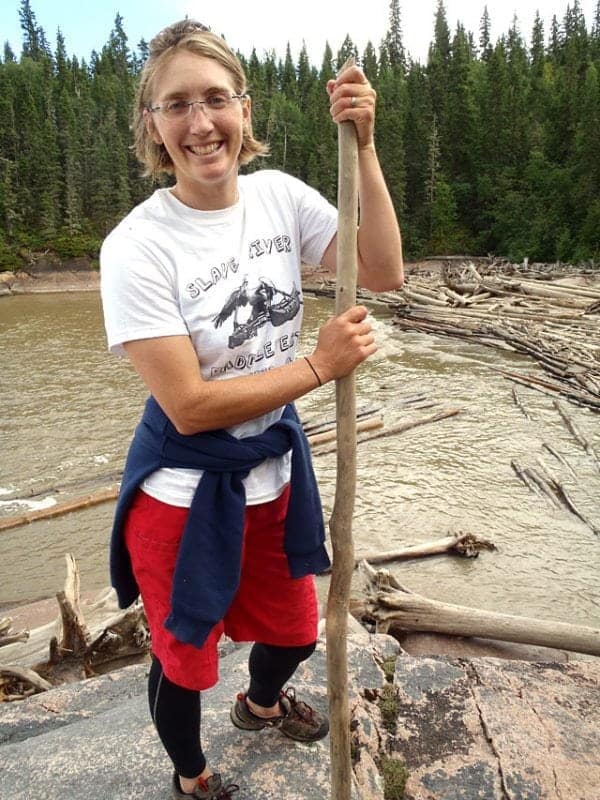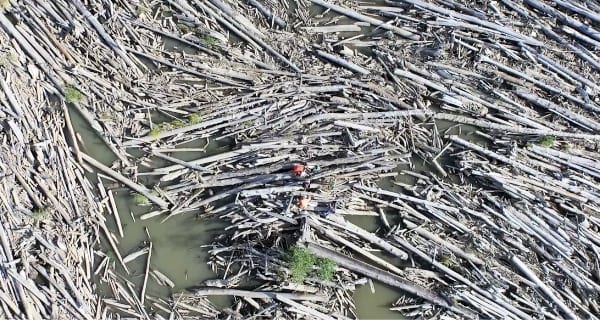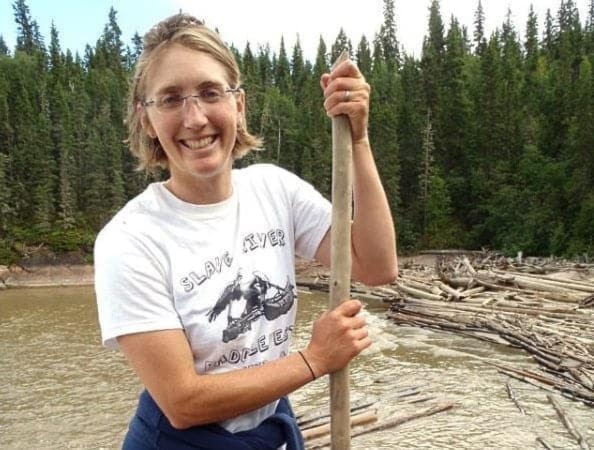A scientist who spends her summers living out of Fort Smith, researching and paddling the nearby waters, says the Slave River and Great Slave Lake would be a lot different if there was no driftwood.
"When water flows through a more complex environment, it takes longer,” says Natalie Kramer Anderson, a fluvial geomorphologist – studying how rivers are shaped and formed – who has been spending much of her time in Fort Smith since first coming up from the U.S. to kayak the Slave River in 2008. She’s been conduct research projects on the river since 2012.

One she’s learned watching driftwood, mainly on the Slave, is that a healthier river is created by the complex environments formed when driftwood jams or dams sections of river, or just generally the slow the pace of flow.
“There's more opportunities for plants that help recycle nutrients or, you know, clean things up,” says Anderson.
When a river travels unimpeded, any contaminants in a river are going to get jettisoned out into whatever larger body of water the river flows into. Sometimes this can contribute to events like algal blooms in oceans, says Anderson.
If a river is slowed down or goes through a marshy area, plants and other organisms can break down contaminants and balance out a river’s make-up.
Part of Anderson’s work involves looking at what impacts development could have on a river. If a river like the Slave or the Athabasca is dammed, all the driftwood will get trapped behind the dam and won’t flow down.
While she says the effects wouldn’t be immediate – it would take perhaps years for the existing driftwood to work its way through the system and decay – they would be noticeable over time.
“It takes time to build landscapes and build habitats,” says Anderson.
Driftwood has changed the landscape along the south shore of Great Slave Lake, near the mouth of the Slave River. It gets pushed up on land by ice, creating huge berms, and then decays. The nutrients from the driftwood break down and feed spruce trees, which preferentially grow out of decaying logs, she says.

While her research has mostly focused on the Slave River, she has been involved in some similar research on the Mackenzie River. Studies of the Mackenzie have proved driftwood travels far and wide.
Wood that was spit out of the Mackenzie River into the Arctic Ocean, often coming from the Liard River originally, has been found as far away as Greenland.
Anderson has secured more funding to continue her research this summer, and says she aims to keep examining Northern rivers and their roles in ecosystems.
“With this next grant we have a researcher who has done a number of years working out of Inuvik with the research station there, and we got some money to do a field stint in the Mackenzie Delta. So that'll be exciting for me because I haven't been there before.”
